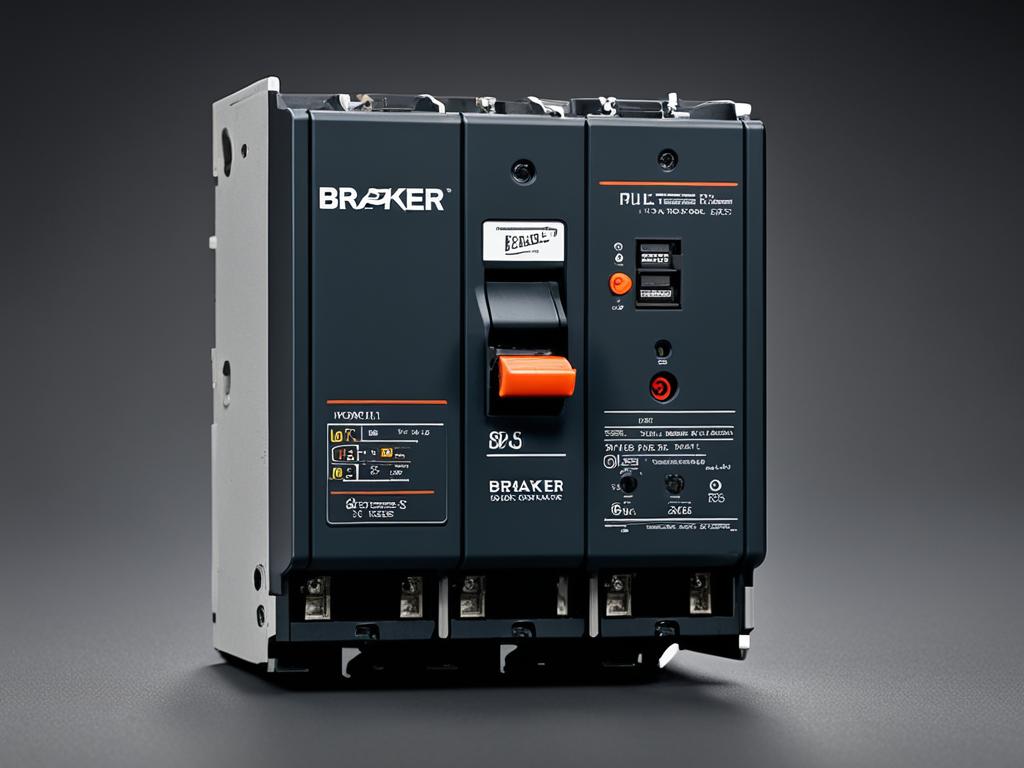When it comes to electrical panels, understanding the differences between BR and BD breakers is essential. These breakers serve different purposes and have distinct features that make them suitable for specific applications. In this article, we will explore the key differences between BR and BD breakers to help you make an informed decision for your electrical needs.
Key Takeaways:
- BR breakers do not have a rejection clip, while BD breakers, specifically twins and quads, do.
- The rejection clip allows BD breakers to fit into designated spaces in the panel.
- BR breakers are more versatile and can be used in a wider range of panels.
- BD breakers should be installed in the appropriate spaces as designated by the panel manufacturer.
- Both BR and BD breakers offer thermal magnetic protection and are compatible with copper and aluminum wiring.
Features of BR Breakers
BR breakers, also known as type BR breakers, are widely used in residential electrical panels. They are designed for use in standard panelboards and offer several key features.
- Thermal magnetic protection: BR breakers provide thermal magnetic protection, which safeguards against overloads and short circuits. This feature ensures the safety of the electrical system and prevents damage to connected devices.
- Easy installation: BR breakers have a plug-on design that allows for easy installation. This feature eliminates the need for complicated wiring and saves time during the installation process.
- Wide range of current ratings: BR breakers are available in various current ratings, ranging from 15A to 100A. This wide range allows homeowners to choose the appropriate breaker based on their specific electrical needs.
- Compatibility: BR breakers are compatible with both copper and aluminum wiring, making them versatile and suitable for different wiring systems.
- High interrupting capacity: BR breakers can handle a maximum interrupting capacity of 10,000 amps. This ensures that the breaker can safely interrupt the flow of electricity in the event of a fault.
Overall, BR breakers provide reliable and efficient protection for residential electrical systems. Their features make them a popular choice for homeowners and electricians alike.

| Feature | Description |
|---|---|
| Thermal Magnetic Protection | Safeguards against overloads and short circuits |
| Easy Installation | Plug-on design for quick and hassle-free installation |
| Wide Range of Current Ratings | Available in various current ratings from 15A to 100A |
| Compatibility | Compatible with both copper and aluminum wiring |
| High Interrupting Capacity | Can handle a maximum interrupting capacity of 10,000 amps |
Features of BD Breakers
BD breakers, specifically type BD twins and quads, offer a range of distinctive features that differentiate them from BR breakers. These breakers are specifically designed for use in electrical panels that have designated spaces for twins and quads, usually located at the bottom of the panel.
A key feature of BD breakers is their inclusion of a rejection clip. This clip allows the breakers to fit securely into the notched busbar in these designated spaces, ensuring proper installation and functionality. BD breakers also provide thermal magnetic protection, effectively safeguarding against both overloads and short circuits.
BD breakers are available in various current ratings, typically ranging from 15A to 50A, to suit different electrical requirements. They are compatible with both copper and aluminum wiring, providing flexibility in their application. Additionally, BD breakers have a maximum interrupting capacity of 10,000 amps, ensuring reliable performance.
To ensure optimal operation and safety, it is essential to install BD breakers in the designated spaces as specified by the panel manufacturer. This ensures a proper fit and avoids any potential issues or hazards. By utilizing the unique features of BD breakers, you can ensure reliable and efficient electrical protection in your residential or commercial applications.
FAQ
What is the main difference between BR and BD breakers?
The main difference lies in their design and the presence of a metal insert known as a rejection clip. BR breakers do not have a rejection clip, while BD breakers, specifically twins and quads, do. The rejection clip allows for proper installation in certain spaces in the panel. Without the rejection clip, a BD breaker may not be compatible with all panels.
What are the features of BR breakers?
BR breakers, also known as type BR breakers, are versatile and widely used in residential electrical panels. They offer thermal magnetic protection, a plug-on design for easy installation, and are compatible with both copper and aluminum wiring. BR breakers are available in various current ratings and can handle a maximum interrupting capacity of 10,000 amps.
What are the features of BD breakers?
BD breakers, specifically type BD twins and quads, are designed for panels with designated spaces for twins and quads, usually located at the bottom. These breakers include a rejection clip and offer thermal magnetic protection. They are suitable for both copper and aluminum wiring and have a maximum interrupting capacity of 10,000 amps. It’s important to ensure they are installed in the appropriate spaces designated by the panel manufacturer.
